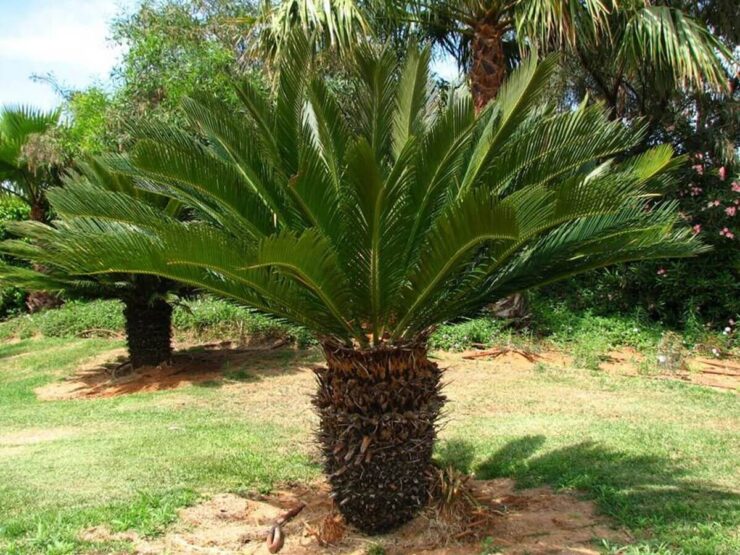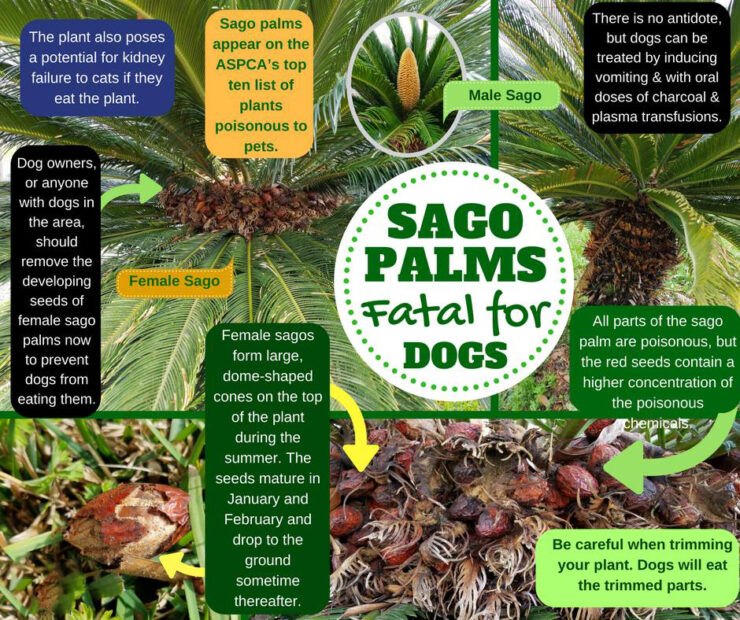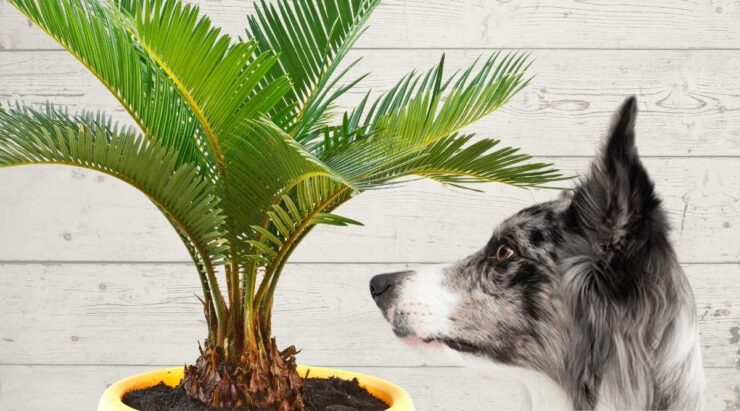Sago palms are tropical plants, commonly grown outdoors in the southern United States. Sago palm toxicity used to be a concern limited to dogs and cats exposed to these plants outside in warmer climates.
Since sago palms are now sold, as large or small ornamental houseplants, online and at Home Depot, Lowe’s, IKEA, Costco and local garden centers in Minnesota, this tropical toxicity is now a concern for Minnesota pets as well.
Sago palms look like small palm trees, but they are not true palms and actually belong to the cycad family. All parts of the sago palm plant are toxic, but more of the sago palm toxin that affects dogs and cats is concentrated in the seeds or nuts. The toxin causes gastrointestinal irritation as early as 15 minutes after ingestion of sago palm parts, followed by liver damage.

Gastrointestinal signs include hypersalivation (drooling), abdominal pain, reduced appetite, vomiting and diarrhea. Signs of liver damage also include vomiting, diarrhea, abdominal pain and reduced appetite, as well as increased drinking and urination, dehydration, lethargy, weakness, jaundice (yellow cast to the skin, mucous membranes and whites of the eyes) and ascites (fluid in the abdomen).
Since the liver is responsible for clotting factors, pets with liver damage can also show signs of bleeding with bruising on their skin, bleeding gums, nosebleeds, a pink tinge to their urine, frank blood in their stools or vomitus, or digested blood in their stool, which manifests as dark tarry stools.
In more advanced stages, patients with liver disease can show neurologic signs within 2–3 days of sago palm ingestion and may have depression, circling, unsteadiness, confusion, muscle tremors, seizures and paralysis, with neurologic signs culminating in a coma or even death.
There is neither a specific test nor a specific antidote for sago palm toxicity. Lab work, with elevated liver values, low protein, low blood glucose, anemia and evidence of reduced clotting, may not show changes for 24–48 hours after sago palm ingestion.

If sago palm ingestion is suspected, it is important to take your cat or dog to a veterinary clinic as soon as possible, rather than waiting for clinical signs to develop. Treatment for sago palm ingestion focuses on decontamination and supportive care and medications to reduce the effects of liver damage.
Decontamination consists of trying to remove any remaining ingested material to reduce the amount of toxin by inducing vomiting, gastric lavage (pumping the stomach), and even administration of enemas.
Activated charcoal may also be also given to prevent further absorption of the toxin. Supportive care focuses on treating the symptoms with hospitalization on intravenous fluids, antibiotics, medications to stop vomiting, gastroprotectants and antacids.
Antioxidants are used to reduce the damage to the liver, and blood or plasma transfusions and Vitamin K may be needed to treat anemia and reduce bleeding. Neurologic signs are also treated symptomatically, with diazepam (Valium) used to stop seizures.
The prognosis for dogs or cats that eat sago plant parts depends on the amount of toxin ingested by body weight and how quickly treatment is instituted. Smaller dogs and cats are more severely affected compared with larger animals that ingest the same amount of plant parts.
The sago palm toxins are concentrated in the nuts or seeds and just 1–2 seeds can be fatal to a medium-sized dog. Reports of survival rates from sago palm ingestion vary, with one study of dogs that ingested sago palm parts reporting a 50% mortality rate.
Since dogs and cats seem inexplicably drawn to highly toxic sago palms, it may be best not to even bring this tropical plant into your house.
The dangers of the sago palm seed to dogs are well-known, but did you know that other common household items can also be toxic to our furry friends? Hydrogen peroxide, for example, can be harmful if used improperly. Learn more about what to watch out for and how to keep your dog safe with this informative article on hydrogen peroxide and dogs.















